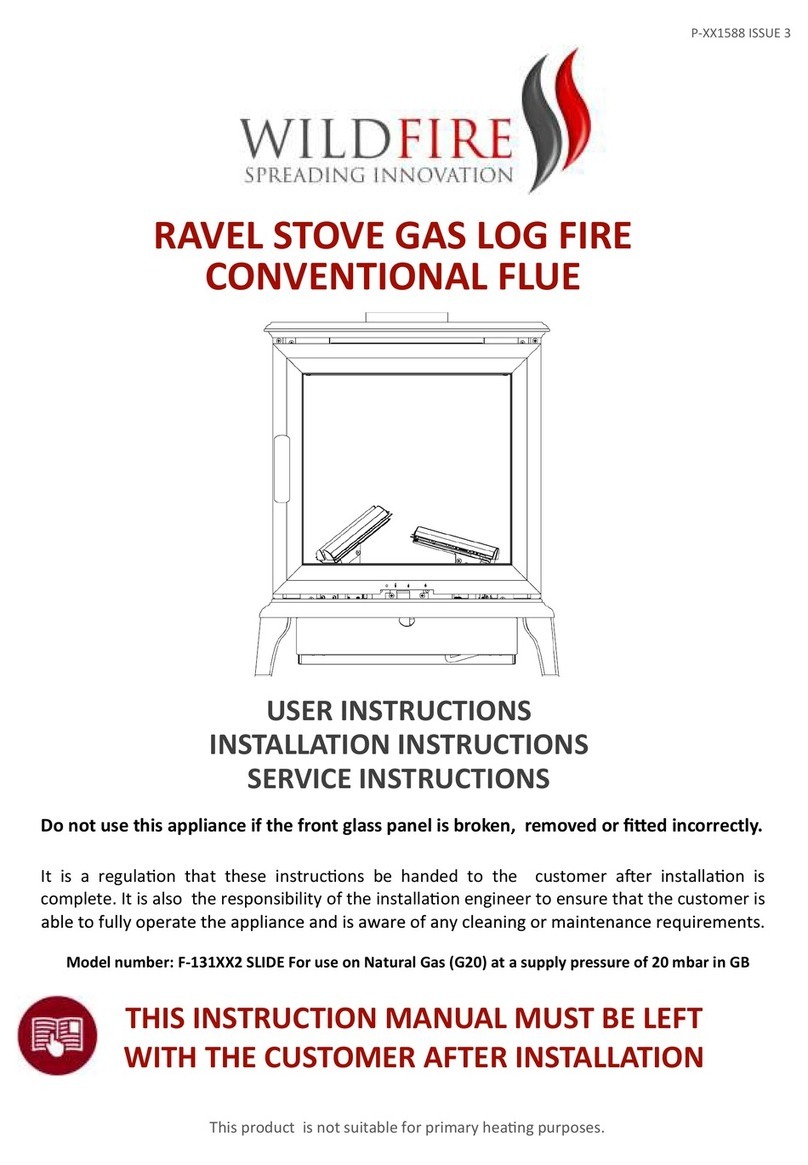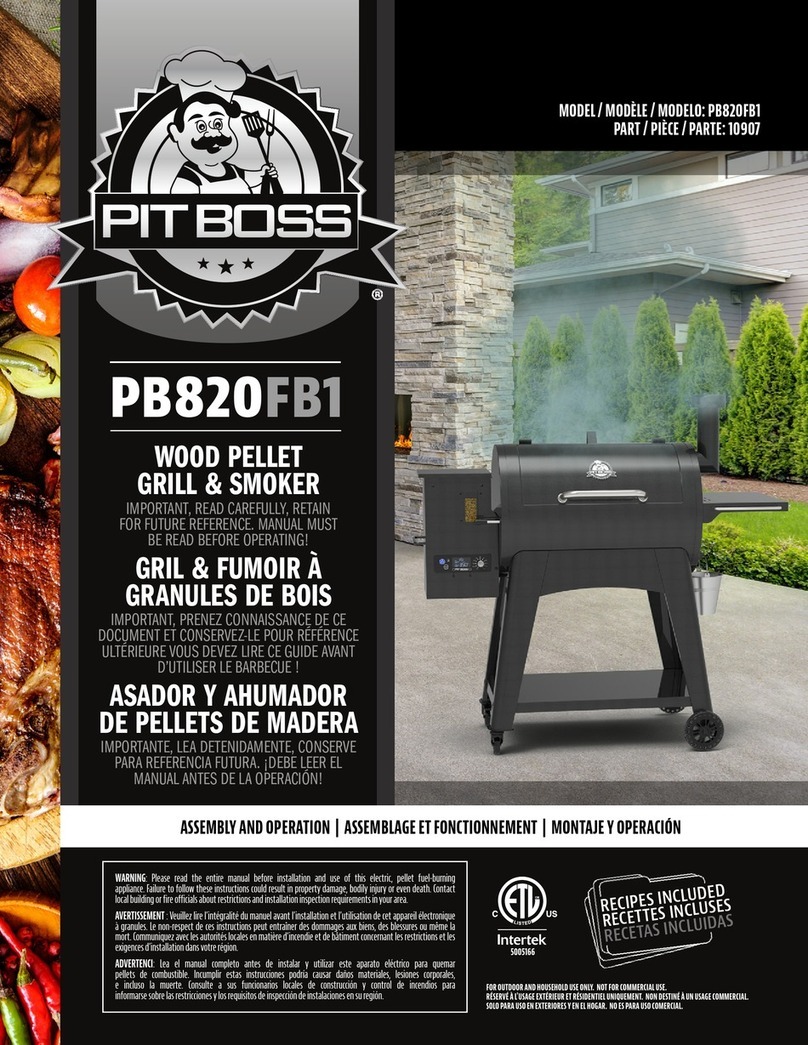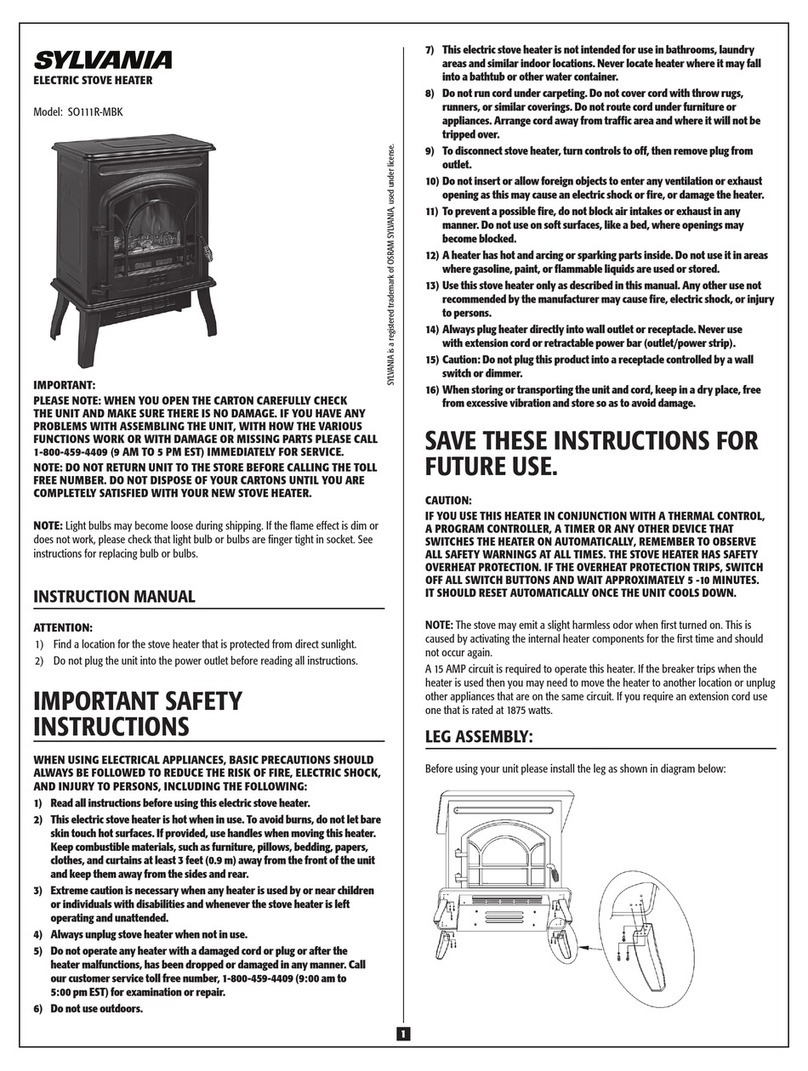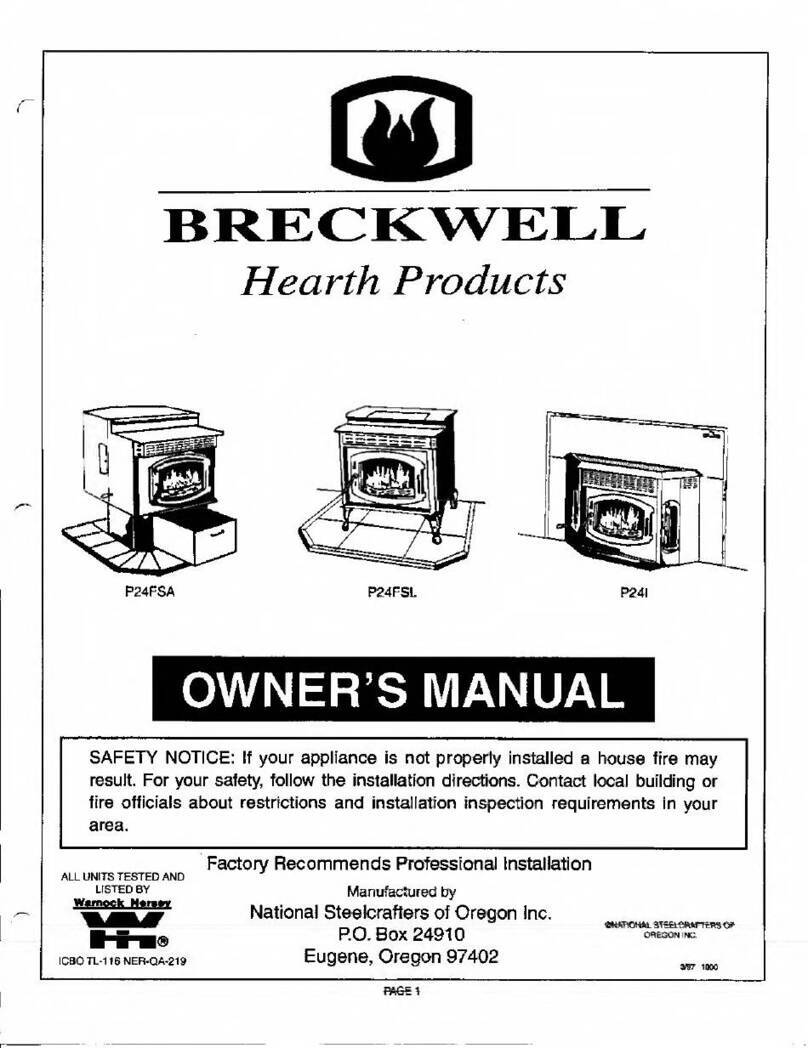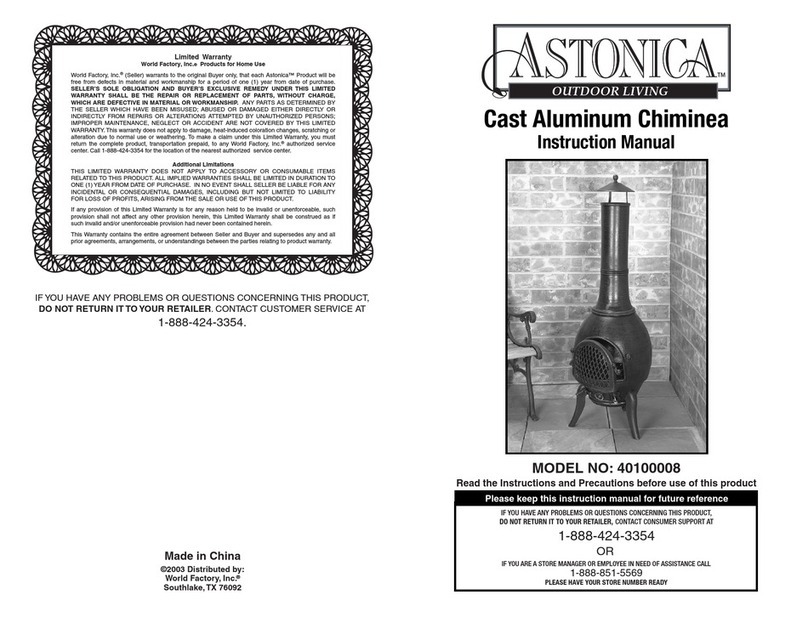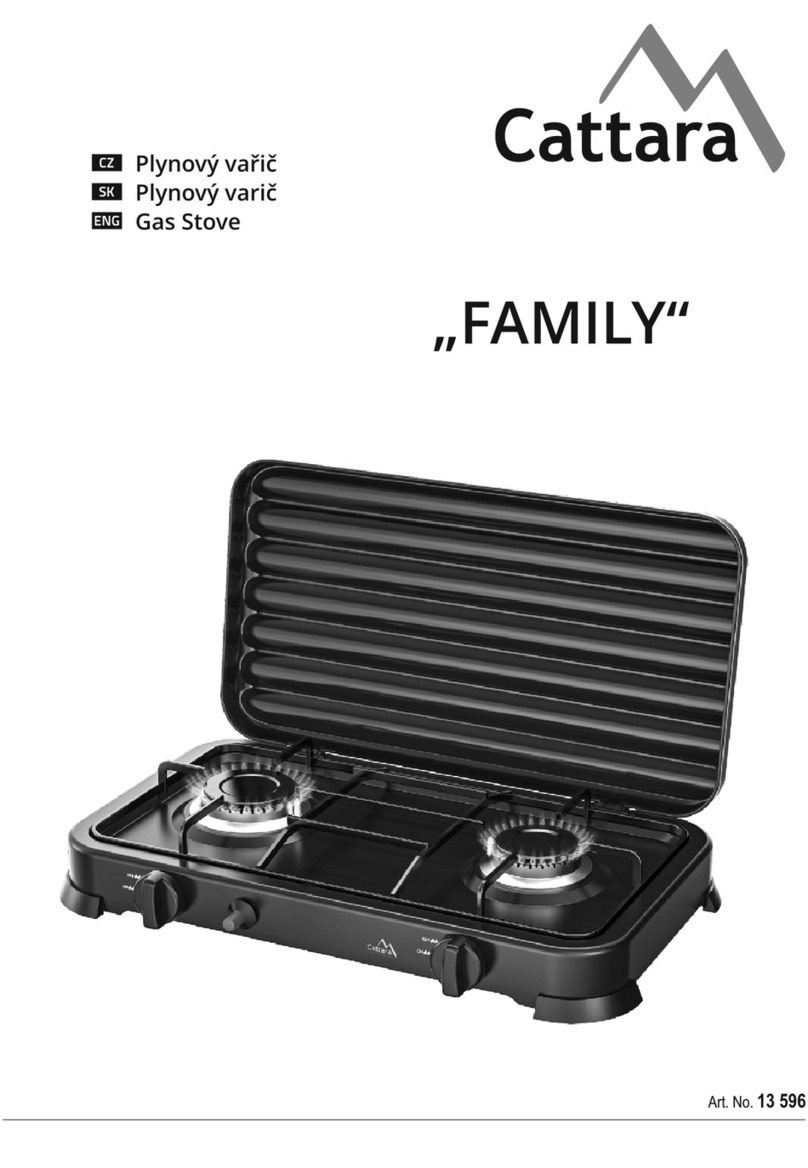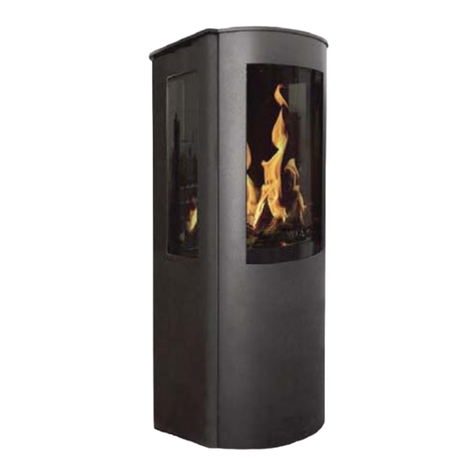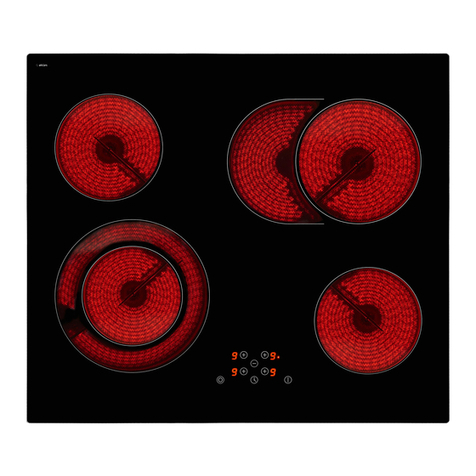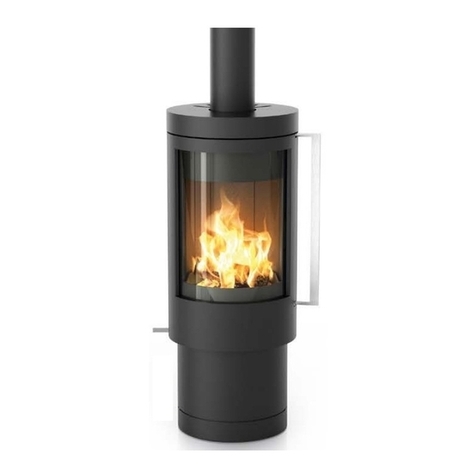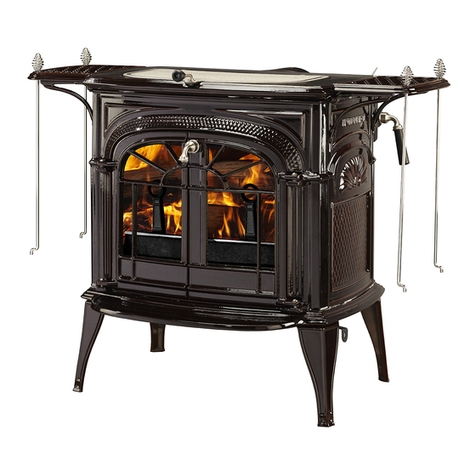
4
Rules for the Safe Installation and Operation
of Your Furnace...
Check local codes, the installation must comply with strict
conformance in regard to clearances.
The Furnace must be installed on a noncombustible floor.
Connect the furnace to tile lined inside masonry chimney
or approved insulated all fuel prefabricated chimney only.
Keep smoke pipe connection as short as possible, using
a minimum 24 gauge pipe with a minimum 1/2” per foot
rise from the flue collar to the chimney opening.
Be sure there is a sufficient supply of combustion air
to the area where the furnace is to be located.
Do not over draft the furnace! It is designed to operate
at .04 to .06 inches of water column and must be set with
a draft gauge to maintain a steady draft.
Do not use flammable liquids for starting a fire.
Do not store fuel or combustibles near the furnace. Some
areas of the furnace are hot and could cause an explosion
and possible bodily or property damage.
Store all ashes in a metal container with a tight sealing
lid and allow ashes to cool before disposing of them,
possibly a week.
Familiarize yourself with the furnace’s solid fuel burning
characteristics before leaving unit unattended for long
periods of time.
The loading door and ash door must be tightly closed
during furnace operation to insure safety and efficiency.
CAUTION -
The furnace has hot surfaces. Keep Children Away.
Do not touch during operation.
In the event of a chimney fire call the fire department,
then be sure the furnace doors are closed tightly and the
power to the unit is turned off.
The furnace is designed to burn air dried wood and coal
at a predetermined firing rate. Over firing could result
in damage to the heat exchanger and cause dangerous
operation. Over firing occurs when the ash door is left
open during operation or a highly volatile fuel, such as
large amounts of small kindling, is used. Note: This ac-
tion voids all warranty.
Follow a regular service and maintenance schedule of
the furnace and chimney for efficient and safe operation.
Do not leave the ash door open when the fire is burning.
Do not let ashes build up closer than 2” to the grate.
With new steel, there is a small amount of oil or dirt on the
metal. You may smell an odor. This is normal during the
first operation. You should assemble the furnace out of
doors and build a small fire in it to “burn off” this dirt and
oil before installing the unit.
During the first few fires, heat may slightly warp the
front and back panels. This is normal and will not
hamper your unit’s operation.
DO NOT CONNECT THIS UNIT TO A CHIMNEY FLUE
SERVING ANOTHER APPLIANCE.
BURN WOOD OR COAL ONLY THESE MODELS. DO
NOT MIX OTHER THAN THE USE OF WOOD TO START
A COAL FIRE.
DANGER - Risk of Fire or Explosion: Do not burn gar-
bage, gasoline, drain oil or other flammable liquids.
WARNING - Risk of Fire:
Do not operate with flue draft exceeding 6 inches
water column.
Do not operate with fuel loading or ash removal
doors open.
Do not store fuel or other combustible material within
marked installation clearances.
Inspect and clean flues and chimney regularly.
In case of a power failure, remove the filter from the cold
air return box if equipped. Do not expect to keep your
home at normal temperatures. Do not load fuel above
the botom of the feed door.
How Your New Furnace Works
Unlike conventional heating (gas, oil, electric), wood or
coal heating requires more user attention. Your furnace,
with its automatic combustion air blower, alleviates the
constant need for adjusting the burning rate common to
other units on the market. The fire, however, must be
started and subsequent fuel added by the user.
Conventional heating system produce heat only when the
thermostat calls for heat. This way of heating is inefficient
and often leaves part of the home either too hot or too
cold. Your furnace is designed to deliver heat as long as
there is a fire in it. The fire intensity is regulated by the
room thermostat, high or low, the fire continues to produce
heat. This heat is continuously distributed throughout the
home by a distribution blower. This constant supply of
heat is uniform and prevents drafts.
This Furnace Must Be Installed By A Qualified Installer.
GENERAL RULES






